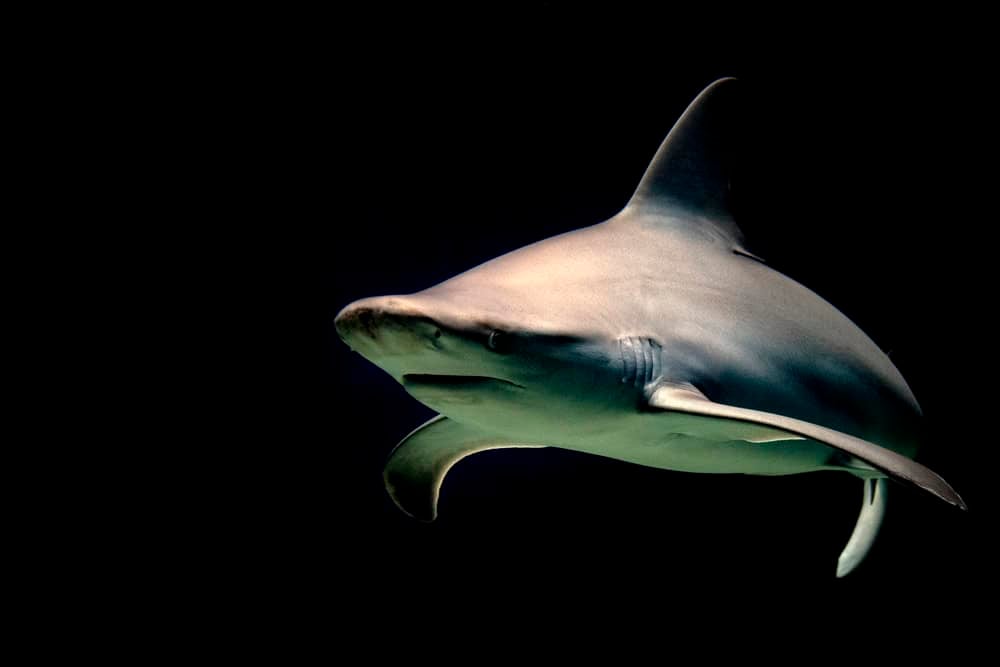The unexpected appearance of an oceanic predator in U.S. rivers has sparked interest and concern among scientists and local communities alike. Known for its agility and strength, this predator’s transition from the ocean to freshwater ecosystems is a fascinating ecological development warranting deep exploration. In this article, we will delve into the implications of this shift, exploring its potential impacts on both the environment and local communities.
Understanding the Ocean Predator

This ocean predator, known as the bull shark (Carcharhinus leucas), is highly adaptable and thrives both in marine and freshwater environments. Bull sharks are distinctive for their robust bodies and short snouts, making them proficient hunters in diverse habitats. Unlike other shark species, bull sharks can regulate the salinity levels in their bodies, allowing them to travel into and survive in freshwater.
The Science Behind Their Freshwater Tolerance

Bull sharks possess a unique physiological ability to survive in freshwater by osmoregulation, a process that helps them manage salt levels within their bodies. Their kidneys and specialized glands work to expel excess salt when in freshwater, ensuring they maintain the necessary balance for survival. This ability has permitted the bull shark to explore and inhabit regions far from the ocean.
Where Bull Sharks Are Now Found

While traditionally associated with tropical and subtropical coastlines, bull sharks have been reported in several major U.S. rivers, including the Mississippi, Potomac, and even the Ohio River. Their presence in rivers is not merely anecdotal; scientific studies have documented these occurrences, indicating a more permanent establishment in freshwater systems.
Adaptation to Freshwater Ecosystems

Adapting to freshwater environments involves more than just physiological adjustments. Bull sharks have demonstrated remarkable behavioral flexibility, adapting their hunting strategies to exploit new prey types indigenous to freshwater ecosystems. They have been observed preying on fish, crustaceans, and sometimes even mammals like dolphins that venture into brackish or freshwater areas.
Potential Impact on Local Ecosystems

The introduction of bull sharks into freshwater ecosystems may alter the ecological dynamics. As apex predators, bull sharks can potentially disrupt the balance in these waters by preying on native species, potentially leading to the decline of certain fish populations. This disruption can ripple through the food chain, impacting a wide range of organisms.
Interaction with Other Aquatic Species

In freshwater ecosystems, bull sharks interact with species not typically exposed to such predators, leading to novel ecological relationships. This interaction might pressure local species to adapt rapidly or face increased predation risks, potentially affecting their survival and breeding patterns.
Human Interaction and Safety Concerns

The presence of bull sharks in rivers raises safety concerns for communities that depend on these waters for recreation and livelihoods. Despite their reputation for aggression, bull shark attacks on humans are rare. However, increased vigilance is advised, especially in areas where these predators have been spotted.
Impact on Local Economies

Rivers are vital to many local economies, supporting fishing, tourism, and various water sports. The presence of an apex predator like the bull shark could deter recreational activities, influencing tourism revenue. Conversely, the novelty of these sharks might also attract enthusiasts and researchers, potentially boosting local tourism.
Research and Conservation Efforts

Scientists are closely monitoring the bull shark’s freshwater expansion to understand its ecological impact and develop strategies to manage potential risks. Conservationists are also concerned about maintaining biodiversity and ecosystem stability, prompting studies to assess the long-term effects of bull sharks in freshwater environments.
Public Awareness and Education

Enhancing public understanding of bull sharks and their new habitats is crucial. Educational campaigns can inform local communities about these predators, promoting safety and awareness while dispelling myths. It is essential to recognize the ecological significance of bull sharks and participate in conservation efforts responsibly.
Future Predictions and Concerns

As climate change continues to affect ocean temperatures and salinity, it is possible that bull sharks and other marine species will increasingly venture into freshwater environments. This shift requires ongoing research to predict ecological changes and devise strategies to mitigate any adverse effects.
Conclusion: Coexisting with a New Reality

The emergence of bull sharks in U.S. rivers adds a new chapter to the ecological narrative of these waterways. Understanding their behavior and impacts is vital as we adapt to their presence. With informed research, conservation efforts, and community education, we can learn to coexist with these remarkable predators while preserving the delicate balance of freshwater ecosystems.
- This Massive Crocodile Fossil Dwarfs Anything Alive Today - August 15, 2025
- From Symbol to Supper: The Cultural Journey of the Chicken - August 15, 2025
- The Lizard That Brought Fire: Aboriginal Australian Legends - August 15, 2025

